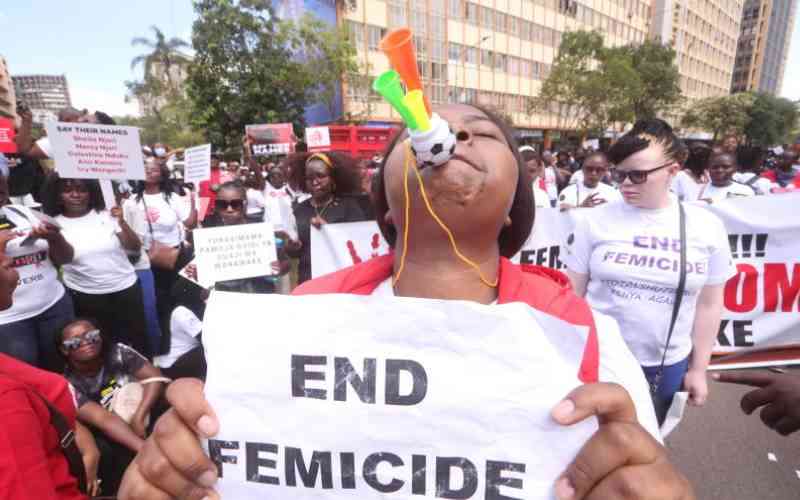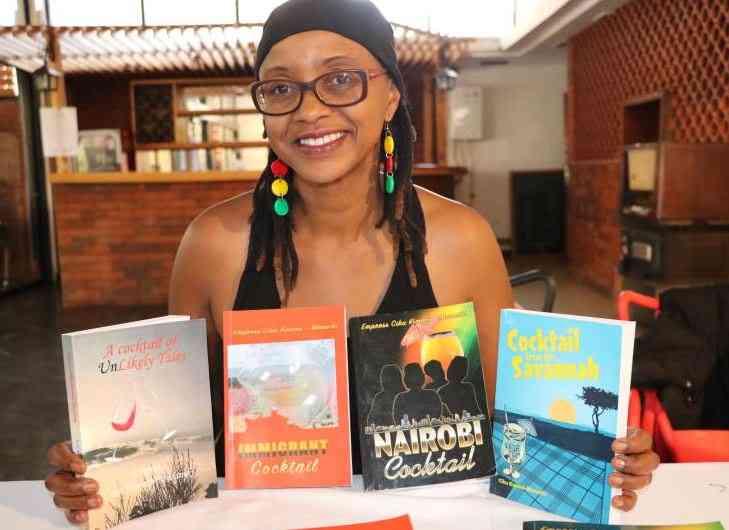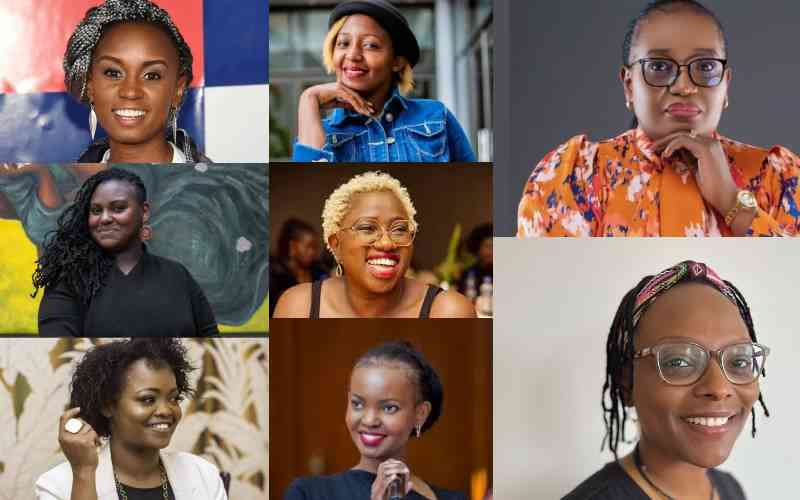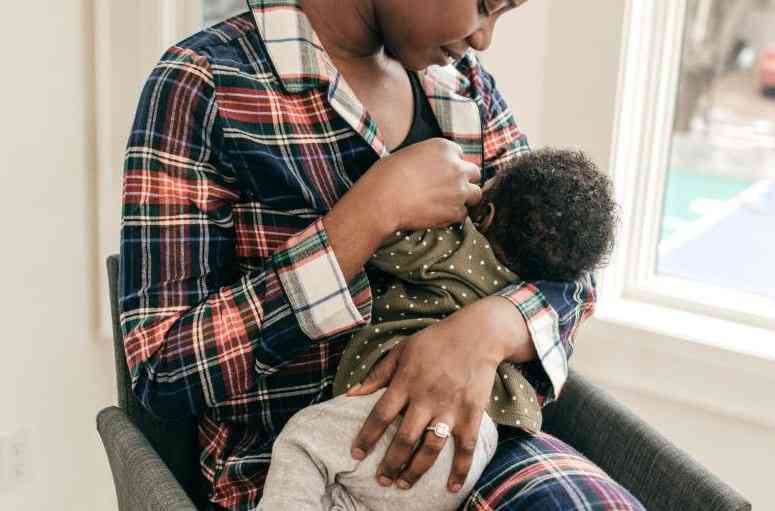
“Don’t vote for her,” the voice said. “She doesn’t know the pain of childbirth.” These words were uttered by her political opponent.
“Did the words cut you?” I ask Joyce Lay, the former Taita Taveta Woman Representative.
“No they did not. But only because I know my story, and the reason I share my story is because I don’t like people telling my story their way. I am the one who lived the pain,” she says, matter-of-factly.
Here, Lay turns her attention to an indistinct voice coming from the background during our Zoom call, and she bursts out laughing.
“My husband is asking me to tell you that I also had a supportive husband. Yes, he was very supportive,” she says.
Lay had her first child when she was in her late teens. Her son died just shy of his second birthday. Years later, she had a hysterectomy (a surgery to remove her uterus) to contain the symptoms of endometriosis, a disorder that causes the tissue that lines the inside of the uterus to grow out of the uterus. This usually causes severe menstrual cramps and heavy bleeding.
Women have recounted in the pages of this newspaper the horrors of living with endometriosis – the usually late diagnosis, and the physical, emotional and financial toll it takes on them. Lay speaks of a similar experience.
So heavy were her periods that instead of using sanitary towels she used adult diapers. So acute were the abdominal pains that urgent trips to the hospital became commonplace.
Before she got a diagnosis in 2008, Lay moved from one gynaecologist to another trying to find answers.

In 2005, one doctor performed a cone biopsy to detect if the cause of her woes was cervical cancer. Whereas the results came back negative, complications from the procedure worsened her pain. In 2007, another doctor found that her Fallopian tubes were blocked.
Meanwhile, the painful and heavy periods persisted and in 2008 another doctor said that the only way to contain the bleeding was to have her uterus removed.
“All the while, my husband and I had been trying for a baby,” Lay tells me.
“But it was just too much – all this bleeding, being rushed to the hospital all the time because of the pain, it was too much.
“I remember this one time my husband and I were at the airport and the pains started and I had to lie on the floor. Then came the bleeding. One of the flight attendants was very helpful. She covered me and then helped me clean up in the bathroom before I was taken to hospital.
“When the doctor said the only solution was surgery to remove my uterus, it got to me because I knew there was no way I would conceive naturally after that.
“I wanted a baby and kept holding on. This started affecting my marriage because my husband couldn’t stand seeing me in so much pain. He kept saying we already have children [from his previous relationship].
“He felt that I was endangering my life. I’m a spiritual person. So I kept praying about it through the fight in my mind and the fights in my marriage until I finally felt at peace.”
Her gynaecologist at the time declined to perform the surgery. “He said he knew how much I wanted a baby and asked for more time to find another solution. But I was at peace with the decision. And in fact, on the day of the surgery, I was also in pain. We found someone else to do it.”
After the surgery...
Lay laughs when she narrates the events after the surgery. “I started shopping for baby stuff. My husband got very concerned.
But I still had hope of having a baby because I know God is not limited, and when you have hope, people think you’re crazy. Hope helped me not focus on the past and the pain. Hope helped me look forward.”
It was during a hangout with her girlfriends that one of them brought up surrogacy and In vitro fertilisation (IVF). Lay, who at the time was considering adoption, asked her doctor about it and was referred to an IVF clinic in Nairobi. “I thought since I still had my ovaries and two of my best friends offered to carry the pregnancy at no charge, I could try this route.”
Gestational surrogacy
In gestational surrogacy, what Lay opted for, the surrogate mother (called gestational carrier) is not biologically related to the child, explains Dr Charles Muteshi, a fertility specialist at Aga Khan University Hospital, Nairobi.
The parents-to-be, called commissioning couple, identify someone to carry the pregnancy for them.
IVF involves the fertilisation of the egg in a laboratory setting. In this case, eggs were retrieved from Lay and sperms were retrieved from her husband for an embryo to be created and later transferred to the surrogate. “Our doctor told us it could take a few days for the egg to be fertilised but in our case it happened in a day.”
Her husband corrects her, then she says: “In a few hours. It happened in a few hours. He was very proud.”
Even though this was an agreement between friends, the Lays had to still involve a lawyer. As Dr Muteshi says, “the medical aspects of surrogacy are straightforward. The challenge is usually on the legal aspects. Essentially the baby is born to the surrogate and the birth notification reads the surrogate’s name until a court order is applied for, for a transfer of parental responsibility.”
Assisted Reproductive Technology (ART), under which IVF falls, is unregulated in Kenya.
In September last year, while presenting to the Senate Health Committee, religious leaders called for further consultations on the Reproductive Healthcare Bill, sponsored by Nakuru Senator Susan Kihika.
The Bill seeks to, among other things, provide for affordable and accessible assisted reproduction services and allow for commissioning parents to be named as the parents of the child.
Some of the complaints by the National Council of Churches of Kenya are the Bill “provided an entryway to same sex partners to access IVF and commodified the unborn child.”
Another Bill that seeks to address the legal and ethical concerns around ART, The Assisted Reproductive Technology Bill (sponsored by Suba North MP Millie Odhiambo), is up for a Second Reading.

After IVF
Lay checked on her friend every day to make sure she was eating right and was comfortable. I asked her if the constant check-ups on the surrogate got annoying at any point.
She laughs: “I don’t think so. If I was controlling, it was on the safety and comfort side because she had issues with high blood pressure here and there.
“If she wanted to go somewhere, I got a car ready for her. I was present during birth and when it came time to take the baby home, my friend joked that she would miss the pampering.”
Lay reveals that she spent Sh 350,000 on IVF alone. And because the law states that the woman who gives birth is the mother of the child, Lay had to go through the process of adoption for her son to be legally recognised as hers, a process that took four years.
“Policy is what governs everything in our country and without regulations it in cases such as this, anybody can set up the cost they want for instance,” Lay first spoke publicly about her experience during a debate in Parliament on the In-Vitro Fertilization Bill. “We have more clinics now, but my hope is for policy, affordability and accessibility.”
Lay’s son is now 10 years old, and the bond between her and her friend is stronger.
“We are family. We see each other regularly and my son goes for sleepovers at her home. Our bond is stronger now. It is not easy to do what they did, and here I include her husband and the whole family because they all made sacrifices,” Lay says.
“Infertility is a shared responsibility and yet society tends to blame the woman. Even most of the infertility treatments are geared towards treating women. What does that say?
“I receive a lot of phone calls from women asking me about my experience and what they should do because they are going through the same problem and the first thing I always ask is if their husbands are involved in the process of seeking treatment. They must be involved.
“The other thing I tell them is a child does not define a marriage. And I also tell them they are still women whether they have biological children or not. You’re not a lesser woman because you don’t have a child.”
When I ask her, days later, if she believed this last statement, that a woman is still a woman whether she has children or not, when she was trying for a child, she responds with a simple “Yes.”
 The Standard Group Plc is a multi-media organization with investments in media platforms spanning newspaper print
operations, television, radio broadcasting, digital and online services. The Standard Group is recognized as a
leading multi-media house in Kenya with a key influence in matters of national and international interest.
The Standard Group Plc is a multi-media organization with investments in media platforms spanning newspaper print
operations, television, radio broadcasting, digital and online services. The Standard Group is recognized as a
leading multi-media house in Kenya with a key influence in matters of national and international interest.










